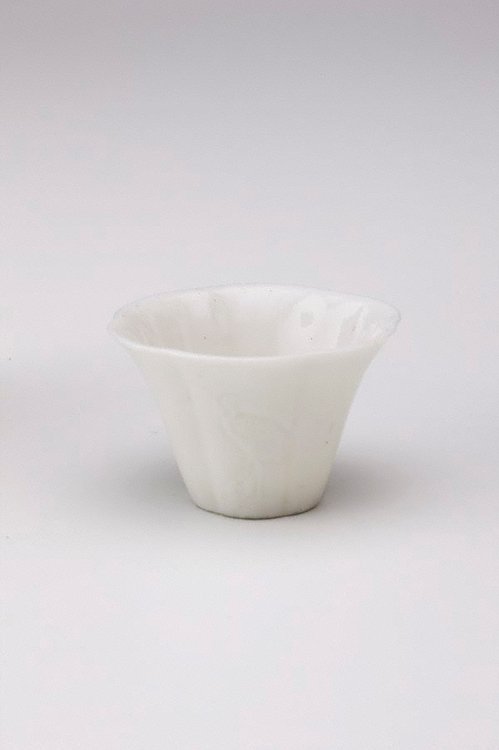-
Details
- Place where the work was made
-
Dehua
→
Fujian Province
→
China
- Period
- Kangxi 1662 - 1722 → Qing dynasty 1644 - 1911 → China
- Date
- 1662-1722
- Media category
- Ceramic
- Materials used
- blanc-de-chine porcelain
- Dimensions
- 5.3 x 10.5 x 4.2 cm
- Signature & date
Not signed. Not dated.
- Credit
- Purchased 1987
- Location
- Not on display
- Accession number
- 352.1987
- Copyright
- Artist information
-
Dehua ware
Works in the collection
- Share
-
-
About
Blanc de chine, the name for the white porcelain of Dehua in Fujian province in Southern China, was produced for both the foreign and local markets. It has been produced for at least four centuries, with the late seventeenth - early eighteenth century being regarded as the classic period when the wares were of the highest quality.
This beautifully modelled, lively representation of a bifid-tailed dragon climbing out of the sea onto a rock is a brushrest - a shape made purely for the Chinese market for use on a scholar's desk. Other items that appear on the scholar's desk include brush pots, water droppers, water pots and censers.
The brushrest is modelled in the form of a dragon resting on the shores of the Islands of the Blest, supposedly situated in the Eastern Sea. According to Daoist belief, if one could find these islands, immortality was assured from drinking the water there and eating the sacred fungus which grew there (sacred fungus can be seen growing out of the rocks on the right side of the brushrest). Grotesque and contorted forms such as the rocks in this piece were popular as objects for the scholar's desk for they were at once fascinating to handle and contemplate, while being regarded as containing the quintessence of spiritual forces, 'chi', which is all the more active when held in distorted shapes.
Asian Art Department, AGNSW, February 1987.
-
Exhibition history
Shown in 1 exhibition
Auspicious: Motifs in Chinese art, Chau Chak Wing Museum, University of Sydney, Sydney, 16 Nov 2020–15 May 2022
-
Bibliography
Referenced in 2 publications
-
Jackie Menzies (Editor), The Asian Collections Art Gallery of New South Wales, 'The Scholar's Studio', Sydney, 2003, 160 (colour illus.).
-
Jackie Menzies and Edmund Capon AM, OBE, Asian Collection Handbook, Art Gallery of New South Wales, 'Chinese Painting', pg. 42-52, Sydney, 1990, 42 (colour illus.), 43.
-




